For the 2025 school year, there is 1 public middle school serving 602 students in Roanoke Rapids City Schools School District. This district's average middle testing ranking is 3/10, which is in the bottom 50% of public middle schools in North Carolina.
Public Middle School in Roanoke Rapids City School School District have an average math proficiency score of 38% (versus the North Carolina public middle school average of 48%), and reading proficiency score of 38% (versus the 50% statewide average).
Minority enrollment is 52% of the student body (majority Black), which is less than the North Carolina public middle school average of 56% (majority Black and Hispanic).
Overview
This School District
This State (NC)
# Schools
5 Schools
882 Schools
# Students
2,763 Students
494,023 Students
# Teachers
179 Teachers
31,644 Teachers
Student : Teacher Ratio
15:1
15:1
District Rank
Roanoke Rapids City Schools School District, which is ranked within the bottom 50% of all 320 school districts in North Carolina (based off of combined math and reading proficiency testing data) for the 2021-2022 school year.
The school district's graduation rate of 82% has decreased from 84% over five school years.
Overall District Rank
#243 out of 325 school districts
(Bottom 50%)
(Bottom 50%)
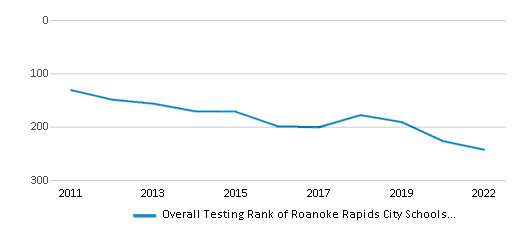
Math Test Scores (% Proficient)
39%
51%
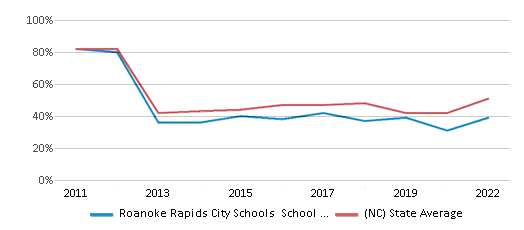
Reading/Language Arts Test Scores (% Proficient)
39%
50%
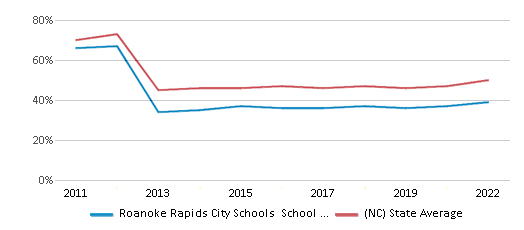
Science Test Scores (% Proficient)
55%
63%
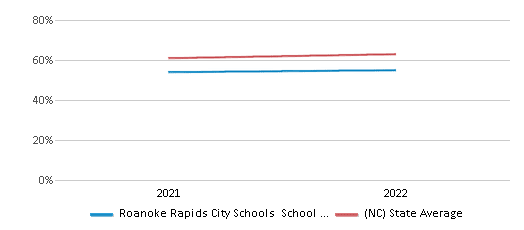
Graduation Rate
82%
86%
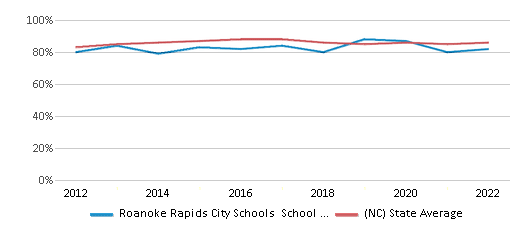
Students by Ethnicity:
Diversity Score
0.62
0.71
# American Indian Students
6 Students
5,633 Students
% American Indian Students
n/a
1%
# Asian Students
63 Students
19,933 Students
% Asian Students
2%
4%
# Hispanic Students
276 Students
98,873 Students
% Hispanic Students
10%
20%
# Black Students
806 Students
122,407 Students
% Black Students
29%
25%
# White Students
1,473 Students
215,701 Students
% White Students
54%
44%
# Hawaiian Students
1 Student
646 Students
% Hawaiian Students
n/a
n/a
# Two or more races Students
138 Students
30,848 Students
% of Two or more races Students
5%
6%
Students by Grade:
# Students in PK Grade:
131
1,882
# Students in K Grade:
184
16,660
# Students in 1st Grade:
204
16,806
# Students in 2nd Grade:
198
17,050
# Students in 3rd Grade:
162
16,530
# Students in 4th Grade:
184
16,849
# Students in 5th Grade:
171
19,618
# Students in 6th Grade:
204
111,560
# Students in 7th Grade:
210
116,793
# Students in 8th Grade:
188
119,029
# Students in 9th Grade:
244
12,380
# Students in 10th Grade:
243
10,877
# Students in 11th Grade:
229
9,420
# Students in 12th Grade:
211
8,569
# Ungraded Students:
-
-
District Revenue and Spending
The revenue/student of $11,056 in this school district is less than the state median of $11,187. The school district revenue/student has stayed relatively flat over four school years.
The school district's spending/student of $10,594 is less than the state median of $11,612. The school district spending/student has stayed relatively flat over four school years.
Total Revenue
$31 MM
$17,307 MM
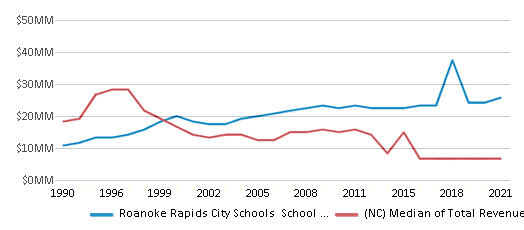
Spending
$29 MM
$17,964 MM
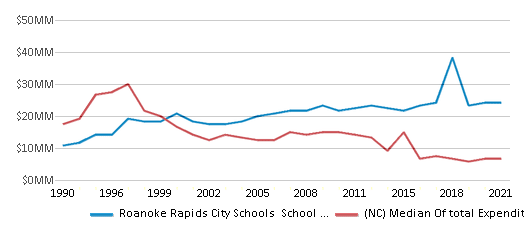
Revenue / Student
$11,056
$11,187
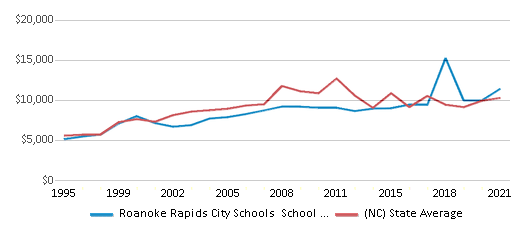
Spending / Student
$10,594
$11,612
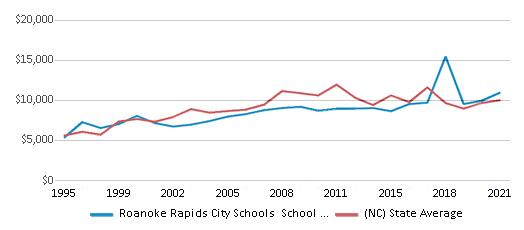
Best Roanoke Rapids City Schools School District Public Middle Schools (2025)
School
(Math and Reading Proficiency)
(Math and Reading Proficiency)
Location
Grades
Students
Rank: #11.
Chaloner Middle School
(Math: 38% | Reading: 38%)
Rank:
Rank:
3/
Bottom 50%10
2100 Virginia Avenue
Roanoke Rapids, NC 27870
(252) 519-7600
Roanoke Rapids, NC 27870
(252) 519-7600
Grades: 6-8
| 602 students
Recent Articles

Year-Round Or Traditional Schedule?
Which is more appropriate for your child? A year-round attendance schedule or traditional schedule? We look at the pros and cons.

Why You Should Encourage Your Child to Join a Sports Team
Participating in team sports has a great many benefits for children, there is no doubt. In this article you will learn what those benefits are.

White Students are Now the Minority in U.S. Public Schools
Increasing birth rates among immigrant families from Asia and Central and South America, combined with lower birth rates among white families, means that for the first time in history, public school students in the United States are majority-minority. This shift in demographics poses difficulties for schools as they work to accommodate children of varying language abilities and socio-economic backgrounds.





